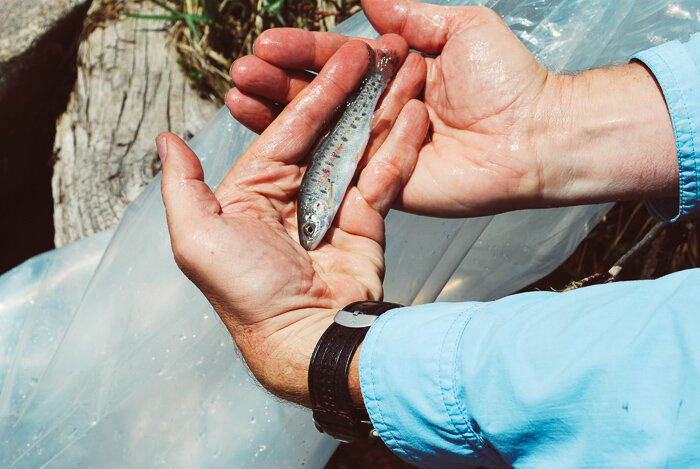The Importance of Dry Gulch
Map created by Jeremy Carlson.
Biologists reintroduced Greenback cutthroat trout to Dry Gulch starting in 2017; Dry Gulch and neighboring Herman Gulch now provide nearly 7 miles of combined habitat for native greenbacks and were the first two locations where self-sustaining greenback populations were restored.
Based on the success of the previous non-native cutthroat trout population, biologist expect greenbacks to maintain a robust, naturally-reproducing population in Dry Gulch that will support catch and release fishing.




During the summer of 2019, Over 110 volunteers and 50 agency staff contributed to the recovery of the threatened Greenback cutthroat trout. The excitement was thick on the morning of July 16, as a line of cars entered the Dry Gulch Trail head and officially kicked off the three-day recovery mission.
The goal of the two stocking projects in Dry Gulch (July 16) and Herman Gulch (July 17) was to release over 1,500 Greenback fingerlings into the high alpine creeks and to ensure that they were spread out in the habitat as much as possible. According to Colorado Parks and Wildlife biologists, spreading the fish out over the different stream reaches will reduce competition and ensure the highest possible chance of survival. Over the past few years of stocking, CPW has found an average of 40% survival - which is a good rate for fish in the wild. The long term goal is for these fish to reproduce naturally and not have to be stocked again. Continue reading about the stocking efforts.
Greenback stocking volunteer, Tyler Kanaval captured this underwater footage of the trout being released into their new homes in Dry Gulch and Herman Gulch.



